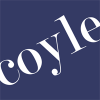Coyle Hospitality Group recently released its 2011 Global Spa Report. This is part four of six articles that will summarize and highlight key pieces and findings of the report.
In a volatile market, it can be hard to strategize for the future. Coyle recognizes that the most successful business plans are client-centered; i.e., they focus on attracting, maintaining, and enhancing the company’s relationships with its consumers. After careful analysis of our 2011 market research, we discovered effective methods to increase customer loyalty and acquisition.
- Be active about social networking. 28% of consumers use Facebook to search for spa information, and Twitter’s usage, currently at 7%, is growing fast. Creating and updating these pages regularly will allow you to remain relevant on the web—consumers will find you more credible and keep you in mind more often if you ‘post’ and ‘tweet’ daily. Consumers feel less pressured to purchase products early, so, to compliment this behavior, you can offer last-minute deals or promotions on these dynamic websites.
- Make online-deal decisions. 71% of consumers use websites to search for deals, and 66% use online-deal sites to book a service. Living Social and Groupon are exploding—in fact, an astounding 30% increase was seen in consumers using Groupon this year—now at 52%—compared to last. You can capitalize on these tendencies by making your online presence known whether or not you decide to offer deals—which, after a careful risk-analysis, may be the case for many small businesses. A presence on greatly-searched websites, added-value, and a high-quality brand name or reputation can be enough to win you clients—thus, you do not have to jeapordize your business by offering deals that negatively affect your bottom line. If you do offer deals, you must increase the focus on client loyalty in a way that does not punish consumers for using deal sites. Further, it is essential not to offend current clients by offering deals only to prospective ones.
- Improve your SEO and maintain your online image. This year, search engines became the most widely used resource for spa information—56% of consumers use them. Further, 30% choose a spa based on a web search. Traditional marketing methods surrounding search engine optimization (SEO) are certainly not obsolete. That being said, this goes hand-in-hand with managing your online reputation. 47% of consumers communicate spa experiences via an online review, and 40% post on social networking sites. By monitoring your online presence, you can avoid damaging your reputation and continue to attract and retain guests.
- Focus on human capital and innovation. Rather than up their prices, the most successful spas add value through marketing and menu engineering. Spas who market their staff through online recommendations, employee biographies on websites, and personal connections during the spa experience enjoy stronger customer loyalty than those who do not. As for innovation, the best spas find a need that other industry professionals are not filling, and they satisfy it. Take a look at the two advertisements below, which show the same photograph but different deals:

When asked, 45% of respondents found advertisement #2 to be very appealing, while only 9% of respondents found advertisement #1 to be very appealing. Consumers want choice and simplicity without any ‘catch’. Spas that embody these values are able to rationalize the product being sold without seemingly cutting back on the quality. Overall, it is about maintaining the perception of luxury in a dim market to cut out the competition and maintain your client base.
* * *
To download and view the full report, please visit Coyle’s website at www.coylehospitality.com/2011-global-spa-report/. To find out about how Coyle can assist you with mystery shopping program design and implementation and improving the spa experience, please visit https://coylehospitality.com//mystery-shopping-services/spa-consulting/.













